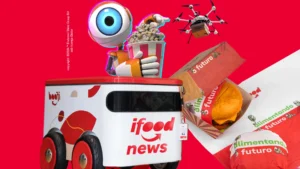Generative artificial intelligence (or generative AI) has been gaining attention in recent months. Especially with the ongoing negotiation of Open AI, valued at US$ 29 billion, points out The New York Times.
According to the newspaper, this area of technology is on the rise in investment in the United States. The company Open AI, for example, grabbed the spotlight with ChatGPT.
The technology is a chatbot that has been used by more than a million people to create complex texts, such as school work and even song lyrics.
The trick is that this chatbot can combine information much faster than us humans (more or less like a digital assistant, like Alexa or Siri, but much more realistic).
Before that, the company had already caused a stir with the DALL-E 2, a tool capable of creating realistic drawings and arts from a description of a text made by a person.
But, after all, what is generative AI?
As these two examples show, generative AI is a artificial intelligence more creative, capable of generating texts, images, and even works of art. Furthermore, it won't just analyze or act on existing data.
“Until a few years ago, we could only make AI classify or label data, for example 'is this photo Anderson's face, yes or no?'”. ANDclarifies the Draft Anderson da Silva Soares, scientific coordinator of the Center of Excellence in Artificial Intelligence at the Federal University of Goiás.
“Generative AIs build content and data and don’t just label them. In other words, I ask the AI to build an image of a face for me”, he adds.
This happens because the software uses complex machine learning models. Thus, it can predict the next word based on sequences of previous words.
Furthermore, it predicts the next image based on words describing previous images, explain to Fast Company Thomas Davenport and Nitin Mittal. They are authors of “All In on AI: How Smart Companies Win Big With Artificial Intelligence.”
They explain that generative AI ingests content such as images, longer text formats, emails, social media content, voice recordings, program code, and structured data.
With these inputs, machines can produce new content, translations, answer questions and even perform sentiment analysis.
Examples of Generative AI
Today, it will be applied, for example, in the marketing area. Machines are already writing blog and social media posts and even sales emails and advertisements.
Heinz, for example, used the DALL-E 2 to make a humorous advertising campaign showing that the image of its famous packaging was widely used when artificial intelligence was proposed to make a ketchup advertisement.
Generative AI has started to be used by technology companies or digital natives because its training requires large amounts of data and computing power.
But once a generative model is trained, it can be “tuned” to a specific content domain with much less data. Davenport and Mittal explain in another article, for Harvard Business Review.
Therefore, its use should expand to other areas in the coming years. “There is potential for generative AI to impact healthcare and life sciences – to make diagnoses, for example, or find new cures for diseases,” write Davenport and Mittal.
For them, generative AI should begin to be adopted by traditional and pharmaceutical industries, for example. “We are starting to see specialized generative models for biomedical content, legal documents and translated text. Thus, this will give rise to additional use cases in these industries and domains”, they add.


